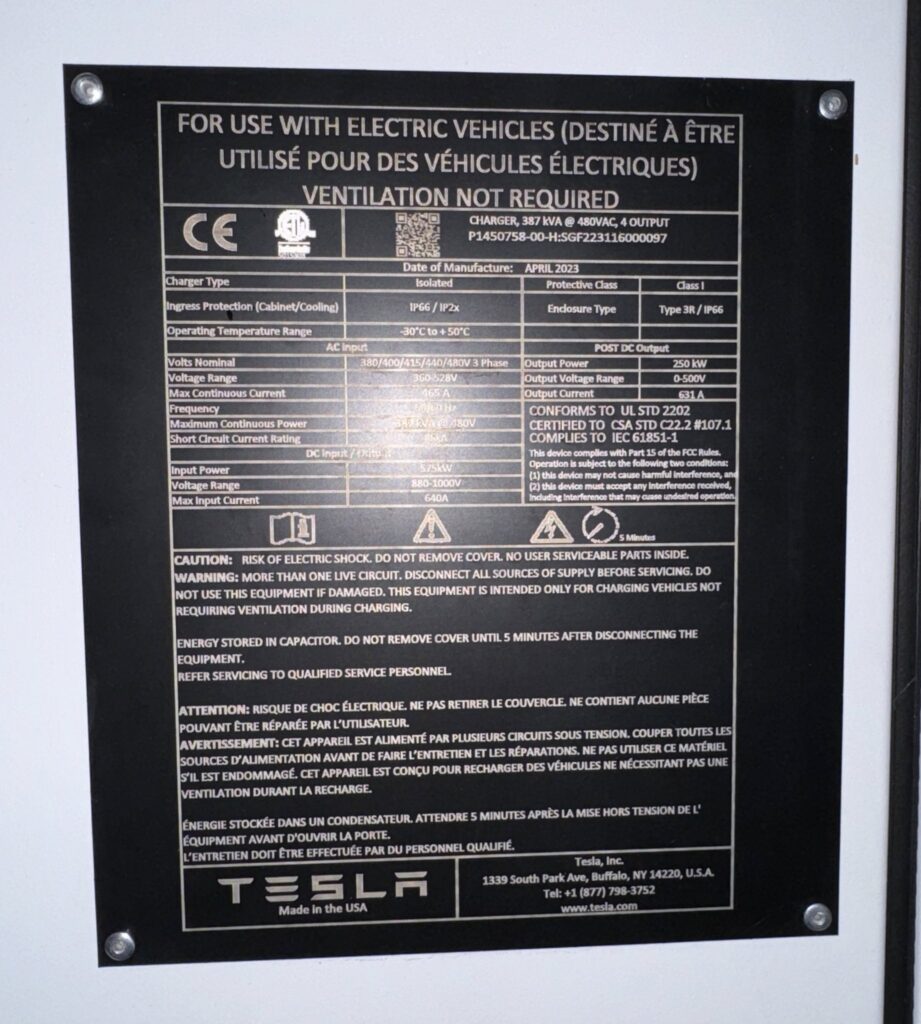Tesla has initiated trials of enhanced charging speeds at select Supercharger stations. This development was highlighted by a Tesla owner and subsequently confirmed by a company engineer over the weekend.
Observations by Tesla Owner
On Sunday evening, a Tesla owner, TesLatino, was charging his Cybertruck at a Supercharger station in Los Gatos, California.
He noticed an unusually high charging speed of 323kW, significantly exceeding the standard 250kW typically offered at these stations. A
lthough the station was equipped with V4 charging posts, the power cabinet still displayed specifications for V3 chargers. This raised questions about whether the observed speeds were due to a glitch or part of a deliberate testing process by Tesla.
TesLatino also observed that the charging speed remained above 300kW for approximately a minute, with the charger delivering around 900 amps during this period.
Confirmation from Tesla Engineer
A little over an hour later, Wes Morrill, Cybertruck Lead Engineer at Tesla, confirmed via a post that the company was indeed conducting trials at several “V3+ stations.” These stations feature V3 cabinets paired with V4 charging posts.

Morrill clarified that the observed high-speed charging was intentional and not a bug, although this feature has not yet been rolled out to all stations equipped with this hardware.
Development of V4 Chargers
Tesla has been progressively introducing its updated V4 chargers across North America and Europe throughout this year and the last. These chargers are anticipated to eventually support charging speeds exceeding 250kW.
However, Tesla has yet to deploy upgraded power cabinets required for these increased speeds, limiting current capabilities to around 250kW.
The recent trials appear to be a precursor to a broader deployment of this feature, as well as the forthcoming rollout of upgraded cabinets for V4 chargers.
Vehicle Compatibility
Currently, most Tesla vehicles are capped at approximately 250kW charging speeds, with the Cybertruck and the latest Model Y units being notable exceptions.
In March, a Cybertruck achieved a peak charging speed of over 327kW using a NxuOne charging station, with a peak current of 462 amps.
This event surpassed a previous record held by another Cybertruck, which reached a charging speed of 253kW, slightly above the standard offered by Tesla’s V3 Superchargers.
Conclusion
Tesla’s trials of faster charging speeds at select Supercharger stations mark a significant step towards improving charging efficiency.
By testing V3+ stations with V3 cabinets and V4 charging posts, Tesla is paving the way for higher-speed charging capabilities, which will benefit the growing number of Tesla vehicles capable of supporting these enhanced speeds.
As the company continues to roll out its updated V4 chargers and upgraded power cabinets, Tesla owners can look forward to even faster and more efficient charging experiences in the near future.